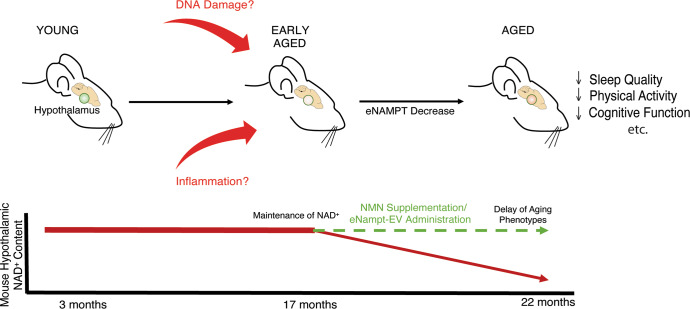Fig. 7. A model for how hypothalamic NAD+ changes during aging and potential therapeutic interventions to ameliorate age-associated functional decline.
Briefly, as mice age, the level of NAD+ in the hypothalamus decreases due to various factors, including DNA damage and inflammation, correlating to age-related behavioral phenotypes. NMN and/or eNampt-EV administration can act as NAD+-boosting interventions delaying the onset and progression of age-related phenotypes.

